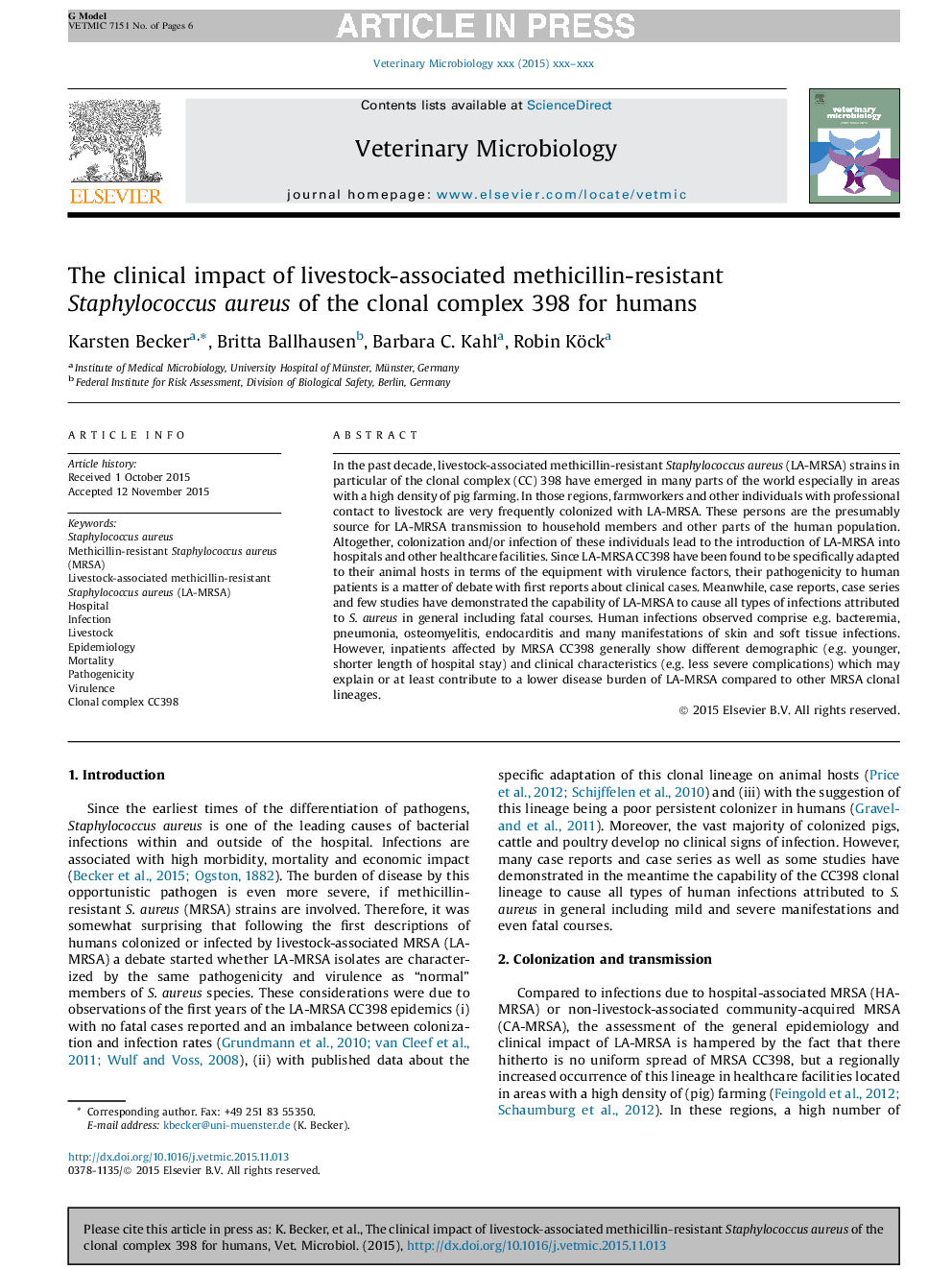| کد مقاله | کد نشریه | سال انتشار | مقاله انگلیسی | نسخه تمام متن |
|---|---|---|---|---|
| 5545361 | 1555323 | 2017 | 6 صفحه PDF | دانلود رایگان |
عنوان انگلیسی مقاله ISI
The clinical impact of livestock-associated methicillin-resistant Staphylococcus aureus of the clonal complex 398 for humans
ترجمه فارسی عنوان
اثرات بالینی استافیلوکوک اورئوس مقاوم به متسییلین مرتبط با حیوانات از مجموعه کلونال 398 برای انسان
دانلود مقاله + سفارش ترجمه
دانلود مقاله ISI انگلیسی
رایگان برای ایرانیان
کلمات کلیدی
Staphylococcus aureus - استافیلوکوک اورئوسMethicillin-resistant Staphylococcus aureus (MRSA) - استافیلوکوک اورئوس مقاوم به متیسیلین (MRSA)Epidemiology - اپیدمیولوژی(همهگیرشناسی)Hospital - بیمارستانLivestock - دام (حیوان)Infection - عفونتMortality - مرگ ومیرVirulence - ویروسی شدنPathogenicity - پاتوژنز
موضوعات مرتبط
علوم زیستی و بیوفناوری
علوم کشاورزی و بیولوژیک
علوم دامی و جانورشناسی
چکیده انگلیسی
In the past decade, livestock-associated methicillin-resistant Staphylococcus aureus (LA-MRSA) strains in particular of the clonal complex (CC) 398 have emerged in many parts of the world especially in areas with a high density of pig farming. In those regions, farmworkers and other individuals with professional contact to livestock are very frequently colonized with LA-MRSA. These persons are the presumably source for LA-MRSA transmission to household members and other parts of the human population. Altogether, colonization and/or infection of these individuals lead to the introduction of LA-MRSA into hospitals and other healthcare facilities. Since LA-MRSA CC398 have been found to be specifically adapted to their animal hosts in terms of the equipment with virulence factors, their pathogenicity to human patients is a matter of debate with first reports about clinical cases. Meanwhile, case reports, case series and few studies have demonstrated the capability of LA-MRSA to cause all types of infections attributed to S. aureus in general including fatal courses. Human infections observed comprise e.g. bacteremia, pneumonia, osteomyelitis, endocarditis and many manifestations of skin and soft tissue infections. However, inpatients affected by MRSA CC398 generally show different demographic (e.g. younger, shorter length of hospital stay) and clinical characteristics (e.g. less severe complications) which may explain or at least contribute to a lower disease burden of LA-MRSA compared to other MRSA clonal lineages.
ناشر
Database: Elsevier - ScienceDirect (ساینس دایرکت)
Journal: Veterinary Microbiology - Volume 200, February 2017, Pages 33-38
Journal: Veterinary Microbiology - Volume 200, February 2017, Pages 33-38
نویسندگان
Karsten Becker, Britta Ballhausen, Barbara C. Kahl, Robin Köck,
